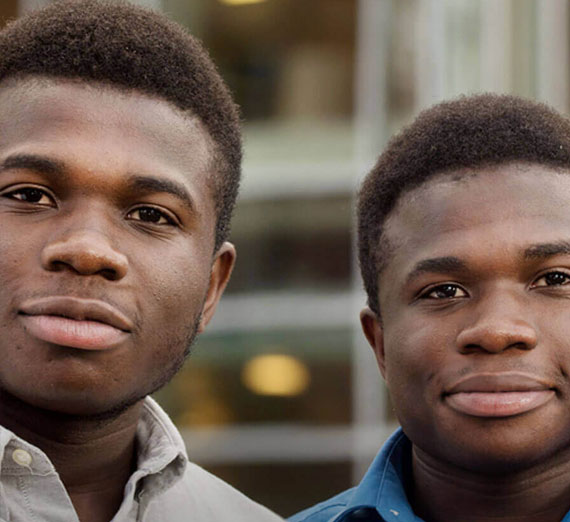Side by Side: Partners in Health
New research and teaching labs advance learning for health care solutions

At the south edge of Gonzaga’s campus is a gleaming white building bearing the names of two renowned schools. Side by side, Gonzaga undergrads and University of Washington School of Medicine students are preparing to help advance best practices in modern health care.
The 18-month-old UW-GU Health Partnership building contains eight cutting-edge labs for novel aspects of physiology, and for students and faculty alike, to delve into myriad conditions.
Cellular and Molecular Research & Teaching Labs
When the facility opened in Fall 2022, GU’s Human Physiology program launched new courses and experiences for Zags. The new cellular and molecular teaching lab accommodates up to 16 students, providing opportunities to develop their bench research skills, while also exposing them to standard biomedical techniques. Immediately adjacent is a research lab with a cell culture room for working with human or tissue cell lines, fluorescent microscope capabilities and cryostorage. Faculty work closely with students to investigate cellular or molecular mechanisms that underly human health and function.
Applied Biomechanics Research and Teaching Labs
Imagine the possibilities for improving the quality of life for people with Parkinson’s disease, individuals with amputations and individuals who have experienced strokes.
The Applied Biomechanics Lab enables that kind of research.
Here, students and faculty investigate the fields of biomechanics and neuromuscular control. Six embedded force plates can record detailed information about how humans interact with the ground as they move, measure forces in three directions, evaluate the center of pressure and more. The added feature of recording motion in three dimensions provides a more comprehensive assessment of movement. Expand the runway through two adjacent lab spaces and – voila! – full-speed sprinting evaluation ensues.
An additional teaching lab provides space specifically for students to learn the fundamentals of human movement including the kinematics and kinetics associated with movement.
Integrative and Environmental Physiology Labs
How do environmental stimuli impact the human body?
An environmental chamber allows manipulation of temperature (0°F to 111°F), humidity (30-95%) and altitude (from sea level to 18,000 feet), providing the chance to evaluate exercise capacity in different environments, task performance in various climates and even how certain garments impact human function.
Consider the life-changing potential of more effective protective clothing for wildland firefighters. The possibilities are endless.
Exercise Physiology Teaching Lab
This space allows for a large amount of equipment, with ample space for student instruction. Here students evaluate many aspects of exercise physiology such as metabolism and measurements of blood flow, muscle oxygenation, continuous blood pressure and cardiac output possible with specific equipment.
Anatomy and Physiology Teaching Lab
This custom-built space provides excellent teaching/ learning opportunities for anatomy and physiology students. Two rooms share a large dividing wall that doubles as a whiteboard or can be opened to create one large lab. Adaptable workstations allow everything from microscopy to dissections to data studies. Students learn through digital tools, virtual reality, specimen dissection and physical models.
Biomaterials Lab
With a specialized testing system for evaluating the mechanical properties of materials, students gain insights into the modulus of bone, the fracture strength of implant material, or the fatigue resistance of a prosthetic device. Both teaching and research happen here.
Just the Beginning
Human Physiology is just the beginning of the expansion of Gonzaga departments in this modern space. Next up is a public health program and the potential for additional collaborations among science, engineering, medicine and more. Stay tuned: Gonzaga School of Health Sciences.
- Academics
- School of Health Sciences
- Human Physiology
- Gonzaga Magazine




